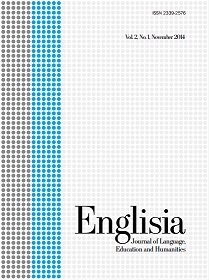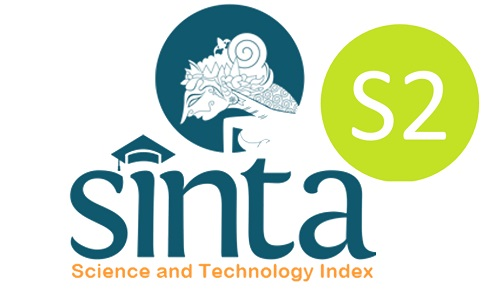CURRICULUM INNOVATION OF AUSTRALIAN AMEP-CERTIFICATE IN SPOKEN AND WRITTEN ENGLISH (CSWE)
DOI:
https://doi.org/10.22373/ej.v2i1.321Keywords:
cswe, language curriculum, curriculum innovationAbstract
This paper is aimed to analyse Certificate in Spoken and Written English (CSWE) curriculum framework which is currently implemented for Adult Migrant English Pro-gram (AMEP) in Australia. The Curriculum framework that I presented in this writing has been implemented in Australia for more than two decades and has been re-searched and evaluated in delivering better output in order to foster better national economic development in the long run through English, job-seeking, and workplace skills courses. The analysis includes brief history of the curriculum, issues that have been resolved in the implementation and how modern sociolinguistic theories related to social-driven educational innovation in second language learning curriculum design has contributed CSWE development to meet the national demands.Downloads
References
Allender, S. C. (1998). Australia's Migrants and Refugees: Opening the Door to Lifelong Learning. How Adults Learn a New Language. Paper presented at the International Conference on "How Adults Learn", Washington, DC. http://www.eric.ed.gov/ERICWebPortal/contentdelivery/servlet/ERICServlet?accno=ED419434
Block, D. (2003). The social turn in second language acquisition. Washington, D.C.: Georgetown University Press.
Burns, A. (2003 ). ESL curriculum development in Australia: Recent trends and debates. RELC Journal, Vol. 34, No. 3, 261-283.
Burns, A., & Joyce, H. d. S. (2007). Adult ESL programs in Australia. Prospect, Vol. 22, No. 3, 5-17.
Christie, F. (1999). Genre theory and ESL teaching: A systemic functional perspective. Tesol Quarterly, Vol. 33, No. 4, 759-763.
Derewianka, B. (2000). Pedagogical grammars: Their role in English language teaching. In A. Burns & C. Coffin (Eds.), Analysing English in a global context: A reader (pp. 240-269). Florence, KY: Routledge.
Feez, S. (2002). Heritage and innovation in second language education. In A. M. Johns (Ed.), Genre in the classroom: multiple perspectives (pp. 43-69). Mahwah, N.J. ; London: L. Erlbaum.
Gass, S. (1997). Input, interaction and second language learner. Mahwah, NJ: Lawrence Erlbaum.
Graves, K. (2008). The language curriculum: a social-contextual perspective. Language Teaching, Vol. 41, No. 2, pp. 147-181.
Halliday, M. A. K. (1985a). An introduction to functional grammar. London: Edward Arnold.
Halliday, M. A. K. (1985b). Systemic Background. In W. S. G. James and D. Benson (Ed.), Systemic Perspective on Discourse, Vol. 1: Selected Theoretical Papers from the Ninth International Systemic Workshop (pp. 1-15). New York: Ablex Publishing.
Larson-Hall, J. (2008). Weighing the benefits of studying a foreign language at a younger starting age in a minimal input situation. Second Language Research, Vol. 24, No. 1, 35-63.
Lenneberg, E. H. (1967). Biological foundations of language. New York: Wiley.
Markee, N. (2001). The diffusion of innovation in language teaching. In D. M. Hall & A. Hewings (Eds.), Innovation in English language teaching: a reader (pp. 119-126). London: Routledge in association with Macquarie University and The Open University.
Martin, S. (1998). New life new language: The history of adult migrant program. Sydney: National Centre for English Language Teaching and Research.
NSW AMES (Adult Migrant English Service). (1993). Certificate in Spoken and Written English. Sydney: NSW AMES.
NSW. AMES. Program Support and Development Services. (1998). Certificates in spoken and written English I & II (Update edition 1998, reprint 1999. ed.). Surry Hills, N.S.W.: NSW Adult Migrant English Service.
Nunan, D. (1988). The learner-centred curriculum: a study in second language teaching. Cambridge; Melbourne: Cambridge University Press.
Paltridge, B. (2006). Discourse analysis: An introduction. London; New York: Continuum.
Rothery, J. (1996). Making changes: Developing an educational Linguistics. In R. Hasan & G. Williams (Eds.), Literacy in society (pp. 86-123). London: Longman.
Rudiana, P. A. (11 January 2010). Local Languages May Become Extinct. tempointeractive.com Retrieved 12 May, 2011, from http://www.tempo.co.id/hg/nasional/2010/01/11/brk,20100111-218442,uk.html
Downloads
Published
Issue
Section
License
Proposed Policy for Journals That Offer Open Access
Authors who publish with Englisia journal agree to the following terms:
- Authors retain copyright and grant the journal right of first publication with the work simultaneously licensed under a Creative Commons Attribution License that allows others to share the work with an acknowledgement of the work's authorship and initial publication in this journal.
- Authors are able to enter into separate, additional contractual arrangements for the non-exclusive distribution of the journal's published version of the work (e.g., post it to an institutional repository or publish it in a book), with an acknowledgement of its initial publication in this journal.
- Authors are permitted and encouraged to post their work online (e.g., in institutional repositories or on their website) prior to and during the submission process, as it can lead to productive exchanges, as well as earlier and greater citation of published work (See The Effect of Open Access).









